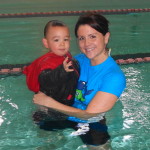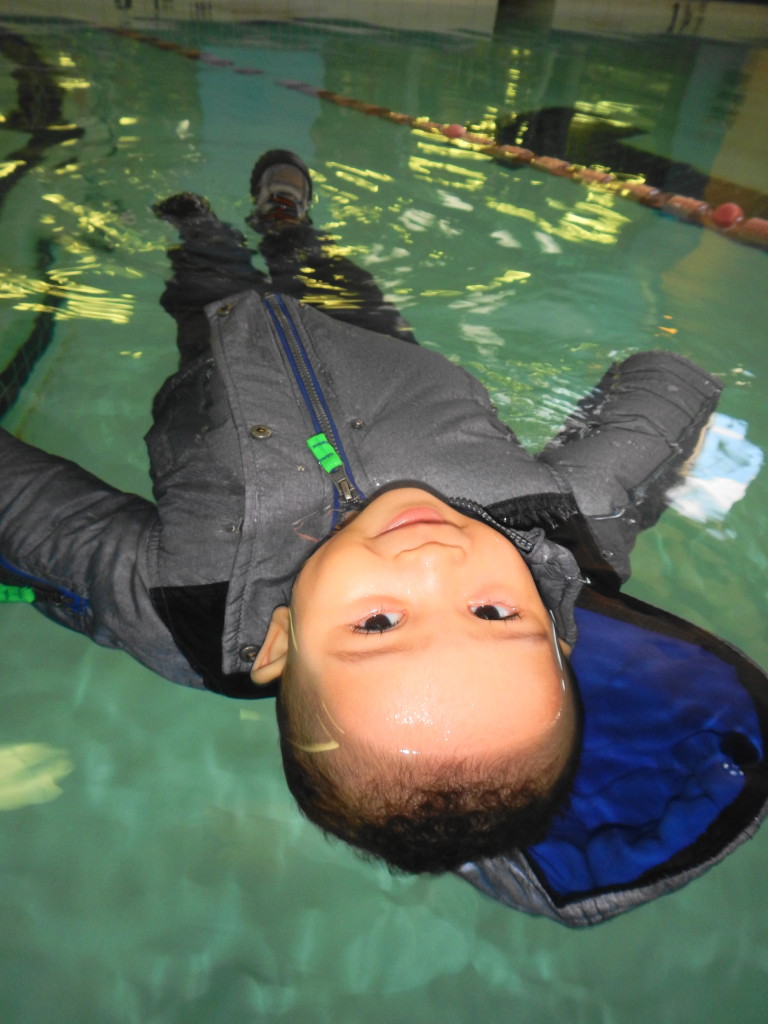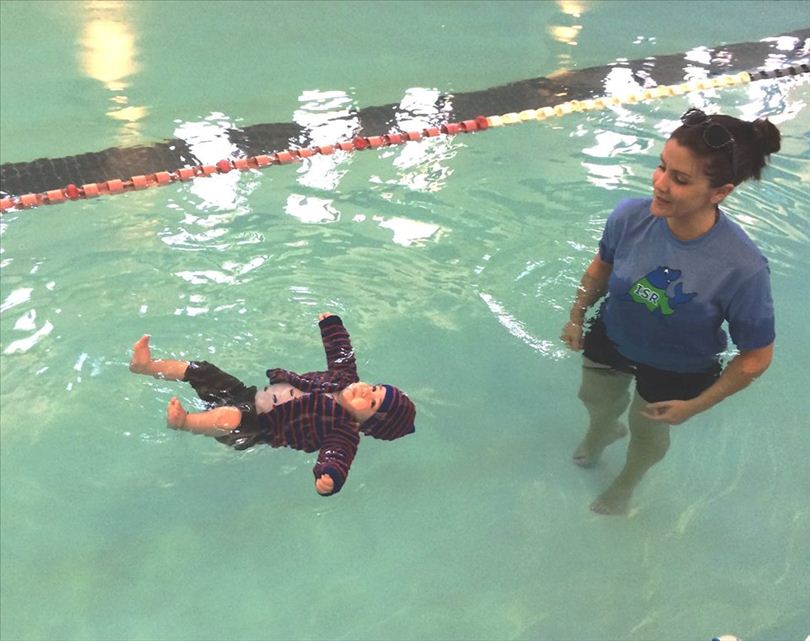Infant and Toddler Rescue Floating and Swimming:
What the Medical Community Needs to Know about Safety and Prevention
Today Show HD Video and Article: www.today.com/video/today/55513113
Dr. Kristine McCarren PT, DPT
Editors note: I initially learned about ISR when I saw a piece on NBC’s Today Show. I’m thrilled to have Dr. McCarren educate the medical community about the benefits of infant and child rescue swimming via her guest blog post on PT2Go. Here, she will touch upon pediatric emergency department drowning epidemiology, the American Academy of Pediatrics stance on swim lessons, and differentiate between the Infant Swimming Resource and traditional swim lesson model.
“All children should learn to swim before they learn to walk…”
I hope the above quote challenges your thought process. It certainly did mine. Allow me to introduce Dr. Kristine McCarren, PT DPT. ~JS
The American Academy of Pediatrics (AAP) recently changed its position statement on drowning prevention based on the study concluding “participation in formal swimming lessons was associated with an 88% reduction in the risk of drowning in 1 to 4 year old children…”.[1]
Other than congenital anomalies, drowning is the number one cause of accidental death in children 1-4 years old. [2]
As clinicians who work directly with pediatric patients or treat an adult patient population, we all have contact with parents of young children professionally and familially.
As spring months turn into hot summer days and nights, what is the solution to assist our communities in keeping our children safe from the number one cause of pediatric accidental death?
The answer: Infant Swimming Resource (ISR).
What is Infant Swimming Resource (ISR)?:
Infant Swimming Resource (ISR) is a program that teaches infants as young as 6 months how to save themselves in the event they make it into the water alone.
ISR is recognized internationally as the safest provider of survival swimming lessons for children 6 months to 6 years.
With nearly 50 years of research and development, Dr Harvey Barnett adapted his theoretical knowledge as a behavioral scientist in order to pioneer ISR’s Self-Rescue® method after witnessing the drowning of his neighbors infant son.
How Does ISR Work?:
Infants 6-12 months learn survival floating. Lessons focus on teaching the child to roll onto their back to float, rest, and breathe maintaining this life-saving position until help arrives.
Children 1-6 years old learn to swim until they need air, roll back to float, and then resume swimming until they reach the side of the pool.
As of April 2015, there have been more than 800 documented cases where former ISR students have used their Self-Rescue® skills to independently save their own lives.
Since 1966, ISR has taught more than 260,000 children internationally.
Is an ISR Instructor More Specialized Than a “Typical Lifeguard”?:
ISR Instructors are infant aquatic specialists who have been trained to teach water survival skills to infants and children 6 months to 6 years.
Instructors undergo an intensive 8-week program.
There is a minimum of 60 hours in-water training and 40 hours academic preparation and testing.
Similar to many medical models, continuing education is required coupled with yearly re-certification to ensure maintenance of teaching skills.
Many ISR instructors come from medical backgrounds (physical therapy, occupational therapy, nursing, et al) and use evidence based knowledge regarding sensorimotor learning to teach these Self-Rescue® skills.
The ISR instructor monitors the child’s temperature through vasoconstriction checks throughout the lesson, and if the child is too cold, the lesson is over.
ISR instructors check for temperature fatigue and abdominal distention throughout lessons.
Temperature fatigue precedes muscle fatigue, which leads to inefficient learning. Abdominal distention makes it hard to breathe, and if left untreated, can be dangerous.
ISR instructors rely on sensorimotor principles and positive reinforcement to teach each infant and child during their personalized lesson.
Based off of these sole principles alone, this is why the allied healthcare professional is the perfect fit to undergo this highly specialized training.
Tactile guidance and prompt reinforcement is the primary means of instruction.
ISR teaches infants as young as 6 months old; therefore, verbal instruction cannot be relied on to teach survival swimming skills which primarily involve instinct, cognitive and motor planning tasks.
The ‘Anatomy’ of an ISR Lesson:
ISR lessons are always one-on-one with the same instructor.
A child learning ISR receives 100% of the instructor’s attention 100% of the time.
Each child attends lessons for 5 days per week for 10 minutes each session.
The 10 minute lesson structure has been scientifically proven to optimize learning and increase retention for this pediatric age population.
A child learns survival skills by actively engaging in his/her environment. Instructors use the ambient air as a teaching tool coupled with the instructor’s touch. This facilitates creating an independent infant and/or child if they are ever faced with a dangerous water scenario.
How are Lessons Different than a Traditional Lifeguard Lesson?:
ISR pools are maintained at 78 to 88 degrees Fahrenheit.
Prolonged exposure to environments that are lower than a child’s body temperature are inefficient for motor learning. ISR lessons are limited to a maximum of 10 minutes to prevent temperature fatigue and optimize efficiency. Children are monitored for temperature fatigue frequently throughout each lesson via vasoconstriction checks.
Up to 86% of children who drown are fully clothed at the time of drowning [3]. ISR makes sure to build in real world scenarios with respect to having the infant and toddler fully clothed in the water upon graduation.
Training begins in summer clothes, sandals and sneakers. After this initial level of mastery, winter clothes including a coat, boots, hat, and gloves are added into the lesson. Swimming and floating in clothes is a completely different experience than in a bathing suit. The extra weight of the clothes and fully saturated diaper make moving in the water more difficult.
ISR lessons ensure that a child is competent and confident swimming and floating fully clothed.
|
Infant Swim Resource |
Traditional Swim Lesson |
|
| Registration |
Family medical history, developmental milestones , current health conditions, developmental issues and medications. Specific conditions are reviewed by MDs and nurses, and instructors are notified of any specific safety measures to be applied during lessons |
Child’s name and age is recorded and a parent signs a waiver to acknowledge risk of lessons. Specific health information is usually not recorded or taken into account |
| Documentation |
Daily bowel, urine, diet and sleep patterns are documented in order to assess changes that may compromise the safety of lessons. If warranted, lessons will be shortened or cancelled |
Do not assess the infant/child’s daily habits, and health concerns that may affect or compromise lesson safety |
| Lesson Duration& Frequency |
10 Minutes 5 Days/Week 6 Weeks |
30-45 Minutes 1 Day/Week |
| Instructor Training |
CPR/First Aid Certified Trained in: Behavioral Psychology, Sensorimotor Learning, Shaping Behaviors, Physiological conditions as they relate to exercise in the water, Emotional learning, 80+ hours of practical experience & studying/analyzing video. Yearly recertification & continuing education required Often medical professionals such as PT’s, OT’s, RN’s |
CPR Certification not required No formal training required |
Critical Numbers:
For every pediatric fatal drowning, there are an additional 5 pediatric patients who visit the emergency department (ED) for nonfatal submersion injuries.
Within 2 minutes of submersion, a child loses consciousness. When a child is submerged underwater for 4-6 minutes, they can be left with irreversible brain damage.
More than 50% of drowning victims treated in ED’s require long term hospitalization or transfer for further care. This potential irreversible brain damage may result in long term deficits, such as memory problems, learning disabilities, and permanent loss of basic functioning.[2]
Healthcare Community Challenge:
As an ISR instructor, it’s imperative to educate the community that water isn’t recreational until a child can survival float and swim. Accidents happen when children explore their environment by crawling, cruising or walking. Ensuring that infants and toddlers can survival float and swim before they walk is critical to prevent drowning.
If you are interested in holding a pediatric Grand Round for more in depth information, Harvey Barnett PhD provides in depth information to the healthcare community on the behavioral approach to pediatric drowning prevention.
I challenge you to educate five other healthcare professionals, friends, or family after reading this article. Not only will you be educating the medical community, you could directly be a part of saving a child’s life.
Kristine McCarren, PT DPT
Email: k.mccarren@infantswim.com
Facebook: ISR Seal Team Survival Swimming, Inc.
New York Contact: www.ISRNewYork.com
International Inquiries: www.infantswim.com
Twitter: @InfantSwimKris
Bibliography:
1. Brenner, R.A . et al., Association between swimming lessons and drowning in childhood: a case-control study. Arch Pediatr Adolesc Med, 2009. 163(3): p. 203-10.
2. CDC: Centers for Disease Control and Prevention. [Accessed April 18, 2014]; Available from: www.cdc.gov/HomeandRecreationalSafety/Water-Safety/waterinjuries-factsheet.html
3. ISR: Infant Swimming Resource. [Accessed April 19, 2015]; Available from: www.infantswim.com/blog/2012/01/86-of-children-who-drown-are-fully-clothed.html
 Kristine McCarren is a Doctor of Physical Therapy (DPT) and Certified Infant Swimming Resource (ISR) Instructor residing in Mt. Sinai, NY.
Kristine McCarren is a Doctor of Physical Therapy (DPT) and Certified Infant Swimming Resource (ISR) Instructor residing in Mt. Sinai, NY.
Dr. McCarren received her B.S. in Exercise Science from Ithaca College and went onto receive her Doctoral degree in Physical Therapy at the University of Stony Brook. She underwent her Infant Swim Resource certification in Casselberry, Florida where she became a Certified ISR Instructor.
Dr. McCarren is experienced in the pediatric setting and dually practices physical therapy in the outpatient orthopedic and homecare settings. She is most passionate about preventing childhood drowning through parent education and instruction of ISR techniques. Her dream is to ultimately open an aquatic facility to teach infants and children ISR Self-Rescue® skills and practice aquatic physical therapy with the pediatric population.


